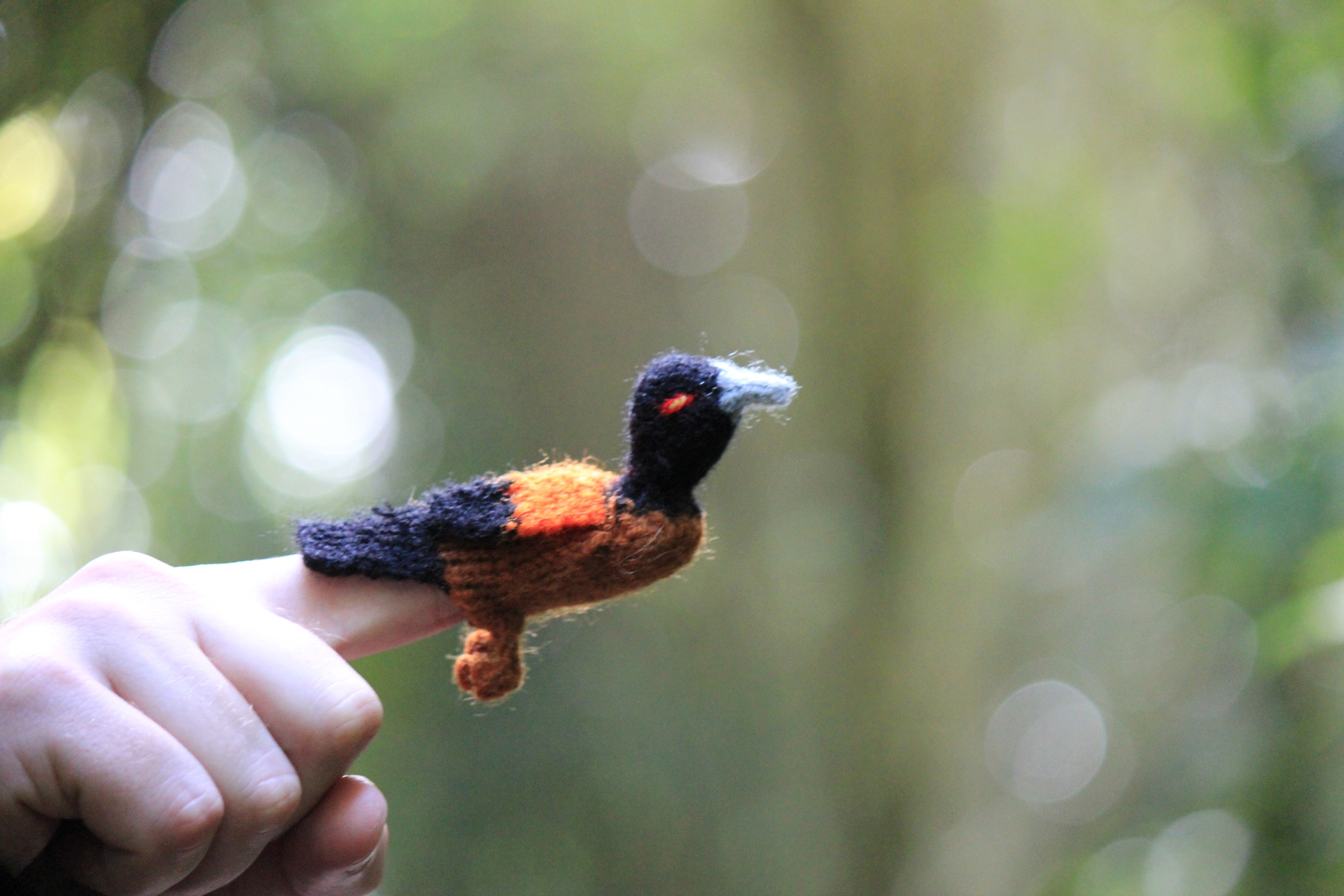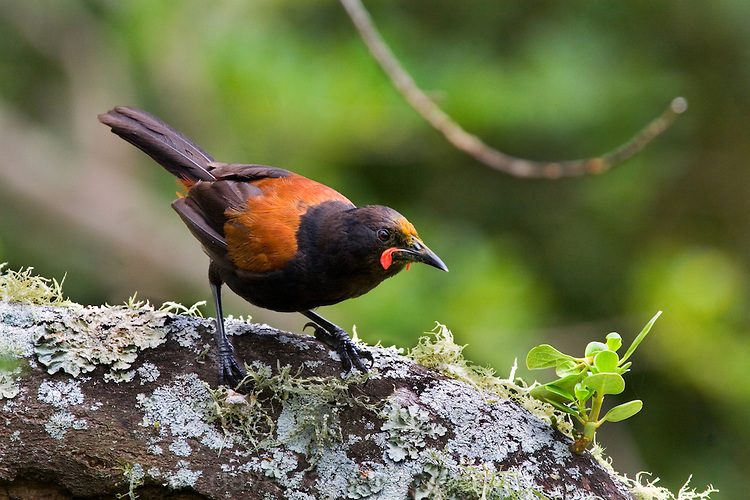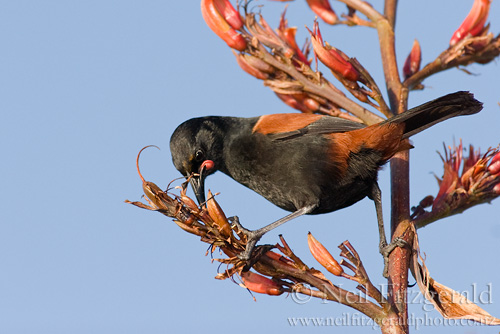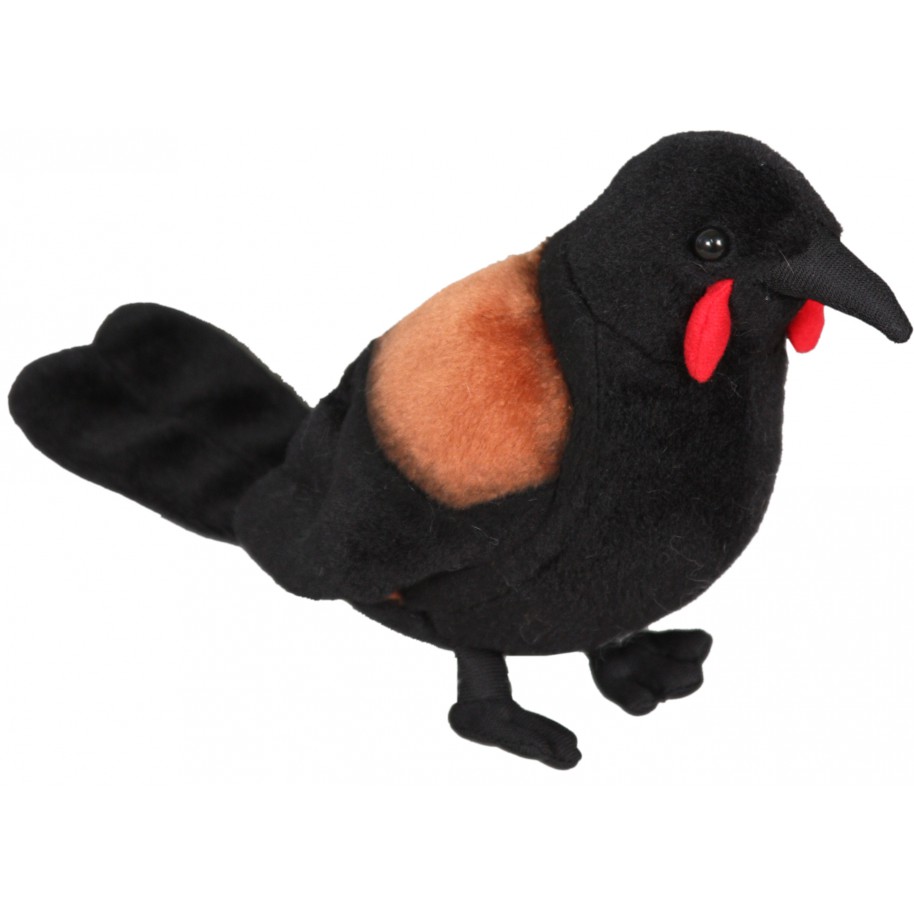
Philesturnus carunculatus
TAXONOMY
Philesturnus carunculatus Gmelin, 1789. Two subspecies.
OTHER COMMON NAMES
English: Saddleback; French: Crйadion rounoir; German: Sattelvogel;
Spanish: Tieke.
10 in (25 cm).
Glossy black, with a
conspicuous chestnut-
brown patch or
“saddle” on its back,
as well as chestnut
on the tip of its tail,
a black bill, black
legs, and orange
wattles on either
side of the beak
DISTRIBUTION
New Zealand. There
are two subspecies,
occurring on North
Island (P. c. rufusater)
and South Island (P. c. carunculatus).
HABITAT
Middle and lower layers of native, temperate forest, usually on
or near the ground.
BEHAVIOR
Actively walks and hops on the ground and among branches,
but is a weak flier. It generally occurs as non-migratory pairs
that defend a breeding territory, or as unpaired birds. Males
have a repertoire of melodious calls used during mating and to
proclaim their territory.
FEEDING ECOLOGY AND DIET
Probes in dead wood and leaf litter to find its prey of insects
and other invertebrates, and also eats fruits.
REPRODUCTIVE BIOLOGY
Builds a cup-shaped nest of sticks on the ground or low in a
shrub. Lays two to three eggs.
CONSERVATION STATUS
Extinct on the mainland of North and South Island. Until
recently, the North Island tieke only survived on Hen Island
and the South Island subspecies on three small islands off
Stewart Island. However, re-introductions to other suitable,
small islands have been made, and it now occurs on about 20
islands. The tieke has suffered from the clearing of it habitat
of native forest, and from the debilitating effects of introduced
mammalian predators. It is listed Near Threatened by
the IUCN. This means that its present non-threatened status
can only be maintained through ongoing conservation efforts
to enhance its surviving populations and maintain its habitat.
According to conservation biologists, the population of the
South Island tieke in the year 2000 was only about 650 individuals,
and there were 2,000 individuals of the North Island
subspecies. Active conservation management includes the establishment
of new breeding populations on islands having
suitable habitat. As of 2000, the North Island tieke was resident
on nine relatively large islands (total of 17,000 acres or
7,000 hectares) and its prospects for survival were relatively
favorable. The South Island subspecies was on 11 smaller islands
(1,250 acres or 500 ha) and it needs translocation to
additional predator-free islands to recover to a safer abundance.
SIGNIFICANCE TO HUMANS
Economic benefits of ecotourism.
Other popular Animals
Photo Gallery of - Tieke




 Animalia Life
Animalia Life